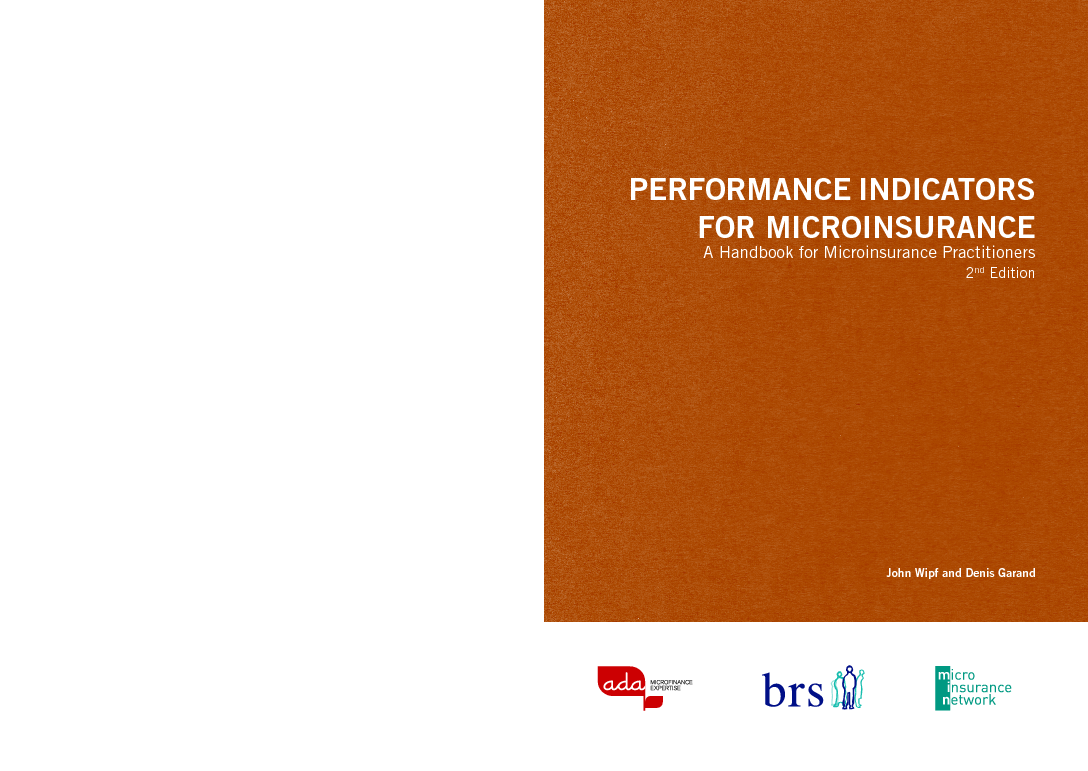PERFORMANCE INDICATORS FOR MICROINSURANCE

Microinsurance is regarded by some as a risk management mechanism that the poor can use to compensate for the lack of appropriate state-sponsored social protection programmes. Alternatively, it is viewed by others as an opportunity to provide financial services to the low-income market at a profit.
Regardless of where the emphasis is placed, all microinsurance programmes should aim to become viable since donor or government subsidies are either only temporary or not available. Without subsidies, all programmes are subject to the same economic and market forces as mainstream businesses, and this requires them to be managed professionally. Management goals, however, cannot be achieved without constant monitoring and transparent measurements of performance.
The key performance principles and indicators discussed in this handbook were established during two Performance Indicators in Microinsurance workshops in 2006 and 2007. Although there may be some differences in performance and interpretation, the principles and indicators are applicable to all microinsurance providers irrespective of legal structure, environment, organisational setup and type of microinsurance product offered.
The first version of the handbook was published in April 2008. Given the volume of feedback from participants in subsequent workshops and from experts, it became important to publish a second and improved version. This version provides more examples, uses better data for illustrating each indicator, categorizes the principles and indicators, elaborates on a number of concepts such as asset-liability matching, and has an expanded glossary of terms. The definition of the promptness of claims settlement indicator was also modified in order to reflect any difficulty the insured may have in claiming. Finally, index-based and Takaful insurance are briefly introduced in Chapter 2 with some guidance on how the principles and indicators may be adapted for these types of programmes.
Although the focus of the indicators in this handbook is on financial performance, we show the social significance or interpretation when discussing each indicator.
Data from five different microinsurance programmes managed by four different organisations in Africa and South Asia is used to provide some examples. Where data was incomplete, interpolation was occasionally used to complete and enhance the examples.
